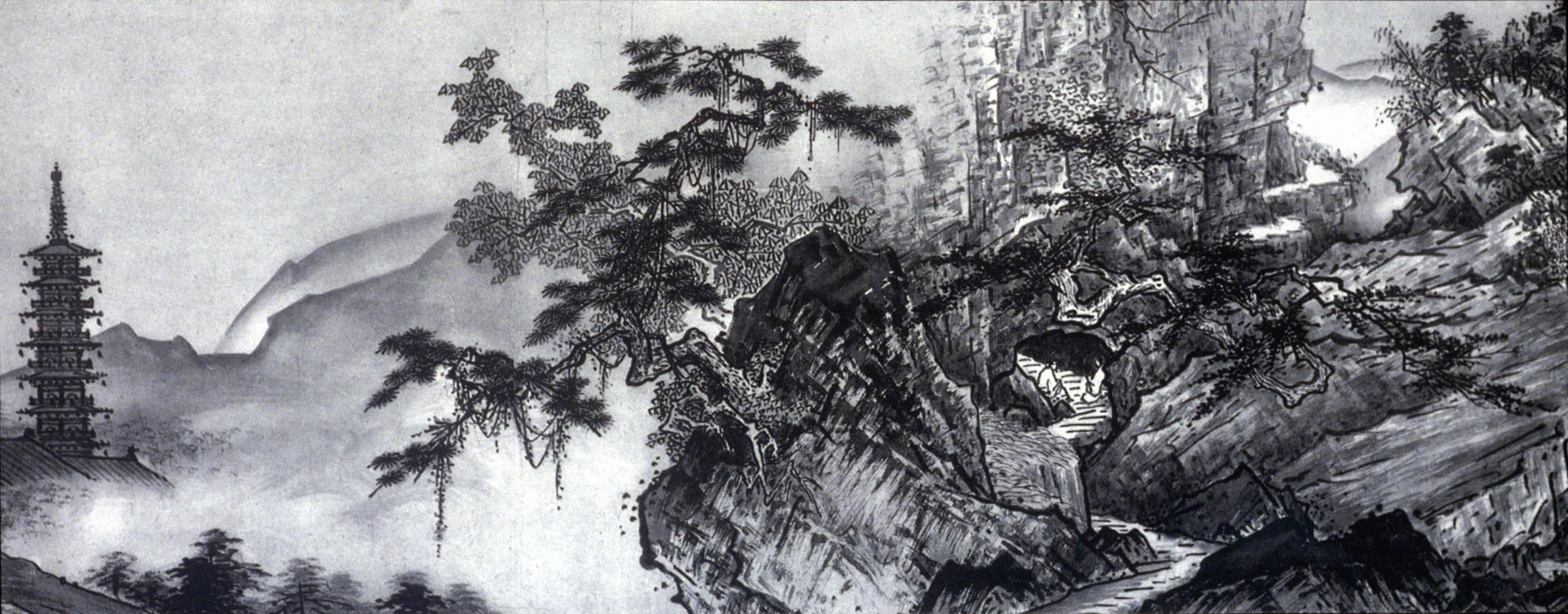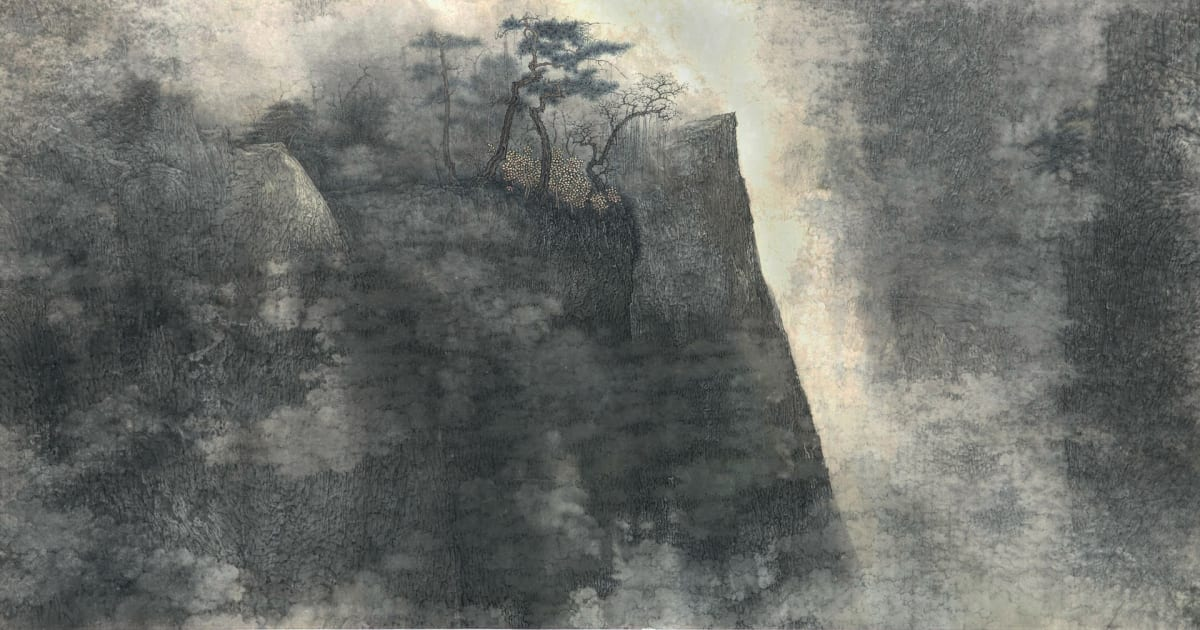The Art of Ink Wash Painting: A Journey Through Eastern Aesthetics
Ink wash painting, also known as Sumi-e (墨絵) in Japan or water-and-ink painting in China, represents one of the most sophisticated forms of artistic expression in East Asian culture. This centuries-old technique combines the precision of calligraphy with the fluidity of watercolor, creating works that capture the essence of subjects with minimal brushstrokes.
Historical Origins and Development
The art of ink wash painting emerged during China's Tang Dynasty (618-907), representing a revolutionary development in artistic expression. Here's a detailed look at its origins and essential tools:
| Time Period | Key Developments |
|---|---|
| Early Tang (618-712) | Initial experimentation with ink techniques |
| Mid Tang (712-812) | Refinement of brushwork methods |
| Late Tang (812-907) | Spread to Korea and Japan |
The technique evolved from Chinese calligraphy, with artists discovering that the same tools could create stunning visual imagery. This innovation led to:
- New Artistic Possibilities
- Varied brush techniques for different textures
- Development of layering methods
- Creation of atmospheric effects
The Four Treasures of the Study (文房四寶)
These four essential tools form the foundation of ink wash painting, each with specific characteristics and uses:
| Tool | Characteristics | Traditional Materials | Usage Notes |
|---|---|---|---|
| Brush (筆) | Multiple sizes available | Goat, wolf, or horse hair | Different hairs for various effects |
| Ink Stick (墨) | Dense, solid form | Pine soot, animal glue | Must be ground with water |
| Ink Stone (硯) | Smooth grinding surface | Duan stone or She stone | Creates perfect ink consistency |
| Paper (紙) | Highly absorbent | Mulberry bark, rice straw | Responds to subtle brush movements |
Master Wang Xizhi once said: "The four treasures are not mere tools, but extensions of the artist's spirit."
Masters of the Art
Chinese Masters
| Master | Period | Notable Contributions | Famous Works |
|---|---|---|---|
| Wang Wei | 699-759 | Pioneer of monochrome landscape, invented "broken ink" technique | "Wang River Villa", "Snow Over Rivers and Mountains" |
| Ma Yuan | 1160-1225 | One-corner composition, atmospheric effects | "Walking on a Mountain Path in Spring", "Viewing Plum Blossoms by Moonlight" |
| Xia Gui | 1195-1224 | Minimalist composition, dramatic brushwork | "Pure and Remote View of Streams and Mountains" |
| Qi Baishi | 1864-1957 | Modern interpretations, vivid colors | "Shrimp", "Insects and Plants" series |

Key Techniques of Chinese Masters:
- Brush Techniques
- Centered brush (中锋) - Creates precise, controlled lines
- Side brush (侧锋) - Produces broader, more expressive strokes
- Dry brush (干笔) - Creates texture and atmospheric effects
Japanese Masters
The transition of ink wash painting to Japan brought new innovations and interpretations:
"In one stroke of the brush, heaven and earth are born." - Sesshū Tōyō
| Master | Signature Style | Major Contributions |
|---|---|---|
| Sesshū Tōyō (1420-1506) | Dynamic landscapes, bold brushwork | "Long Scroll of Landscapes" (山水長巻), pioneering use of negative space |
| Hasegawa Tōhaku (1539-1610) | Atmospheric effects, subtle gradations | "Pine Trees Screen" (松林図屏風), revolutionary use of mist techniques |

Technical Innovations by Japanese Masters:
- Hatsuboku (溌墨) - Splashed ink technique
- Creates spontaneous, abstract effects
- Emphasizes the natural flow of ink
- Tarashikomi (垂らし込み) - Pooling technique
- Produces unique textures and patterns
- Allows for subtle color variations
Fundamental Principles
Ink wash painting is governed by several fundamental principles that form its artistic core:
1. Economy of Stroke (一畫)
| Principle | Application | Master's Example |
|---|---|---|
| Minimal Marks | Single stroke to capture form | Qi Baishi's shrimp paintings |
| Precise Execution | No corrections possible | Sesshū's landscape scrolls |
| Energy Flow | Continuous brush movement | Wang Wei's mountain scenes |
"One stroke must carry the weight of a thousand thoughts." - Traditional Chinese saying
2. Tonal Variation (墨分五色)
- Five Classical Ink Gradations
- 濃墨 (Dark ink) - Deep blacks for foreground
- 淡墨 (Pale ink) - Light grays for distance
- 干墨 (Dry ink) - Textural effects
- 濕墨 (Wet ink) - Atmospheric effects
- 破墨 (Broken ink) - Transitional tones
3. Negative Space (留白)
The concept of empty space transcends mere composition:
| Aspect | Significance | Traditional Symbol |
|---|---|---|
| Philosophical | Represents the Void (空) | Zen circle (円相) |
| Compositional | Creates breathing space | Misty mountains |
| Technical | Highlights brush strokes | White paper as snow |
"Empty space is not nothing - it is everything that allows something to be." - Hasegawa Tōhaku
Traditional Subjects and Themes
Ink wash paintings typically focus on several classical subjects:
- Landscapes (山水) - Mountains, rivers, and misty scenes
- The "Four Gentlemen" (四君子) - Plum blossom, orchid, bamboo, and chrysanthemum
- Birds and flowers (花鳥)
- Animals, particularly those of symbolic significance
- Human figures and historical scenes
Contemporary Practice and Innovation
Modern Masters and Innovation
| Artist | Style | Notable Works | Innovation |
|---|---|---|---|
| Liu Dan | Neo-Classical | "Dictionary Rock", "Poppy" | Hyper-detailed geological formations |
| Li Huayi | Contemporary Shanshui | "Landscape of Immortals" | Monumental scale paintings |
| Xu Bing | Experimental | "Book from the Sky" | Integration of text as imagery |

Digital Revolution in Ink Art
- Hardware Innovations
- Pressure-sensitive tablets simulating brush pressure
- Virtual reality platforms for 3D ink painting
- High-resolution scanning of traditional works
- Software Developments
- AI-powered brush engines
- Digital ink flow simulation
- Traditional texture libraries
The Learning Journey
| Stage | Focus | Duration | Key Skills |
|---|---|---|---|
| Beginner | Basic strokes | 6-12 months | Brush grip, pressure control |
| Intermediate | Four Gentlemen | 2-3 years | Ink gradation, composition |
| Advanced | Complex subjects | 5+ years | Personal style development |
Traditional progression through subjects:
- Fundamental Brush Techniques
- Eight basic strokes (横、竖、撇、捺、点、钩、提、折)
- Pressure variation exercises
- Ink consistency control
- The Four Gentlemen (四君子)
- Plum blossom (梅) - Winter's resilience
- Orchid (蘭) - Spring's elegance
- Bamboo (竹) - Summer's flexibility
- Chrysanthemum (菊) - Autumn's endurance
- Advanced Subjects
- Birds and flowers (花鳥)
- Landscape elements (山水)
- Figure painting (人物)
Philosophical Foundations
"In ink wash painting, we do not merely represent what we see, but what we feel and know." - Master Chang Da-Chien
Core philosophical principles:
- Chan Buddhist Influences
- Mindfulness in practice
- Direct transmission of essence
- Non-attachment to outcome
Contemporary Preservation Efforts
| Institution Type | Preservation Method | Impact |
|---|---|---|
| Museums | Digital archives, exhibitions | Public awareness |
| Universities | Research programs, workshops | Academic development |
| Cultural Centers | Master classes, demonstrations | Practical transmission |
The future of ink wash painting lies in its ability to adapt while maintaining its core principles. Modern practitioners are finding innovative ways to express traditional concepts through contemporary means, creating a bridge between ancient wisdom and modern expression. The meditative qualities and connection to nature offered by this art form provide a valuable counterpoint to our increasingly digital world, making its preservation and evolution more crucial than ever.
5. Transform Videos with Ink Wash Artistic Effects
Experience the fusion of traditional artistry and modern technology through Morph Studio's innovative Style Transfer feature. Our AI-powered platform transforms your videos into stunning works that echo the grace and fluidity of traditional ink wash paintings.
Click HERE to go to Morph Studio Video Style Transfer.
.png)
Three Simple Steps:
- Upload : Begin by importing your video to our Style Transfer platform.
- Select : Choose the Ink Style.
- Create : Let our AI work its magic, transforming your footage into a flowing masterpiece of light and shadow.
Through this groundbreaking technology, we're making centuries-old artistic traditions accessible to everyone, enabling users to create videos that embody the subtle beauty and flowing grace of ink wash painting while maintaining their unique creative vision.
Conclusion
Ink wash painting, whether in its traditional form as Sumi-e or in contemporary interpretations, continues to captivate artists and viewers alike. Its principles of simplicity, directness, and harmony with nature offer valuable lessons for modern art and life. As we face an increasingly complex world, the wisdom embedded in this ancient practice becomes more relevant than ever.